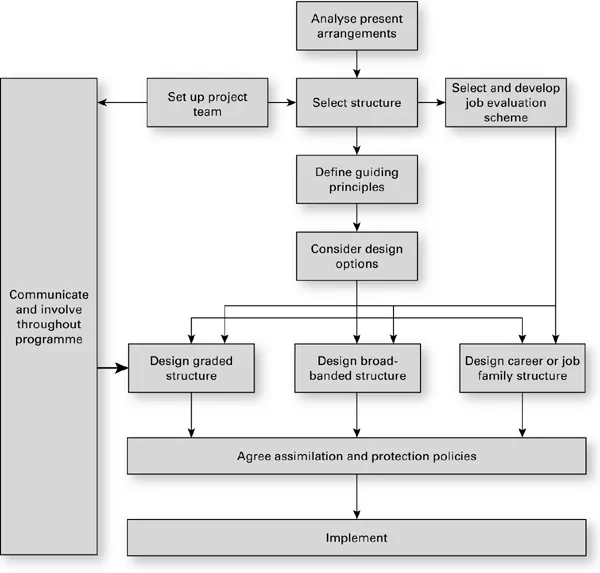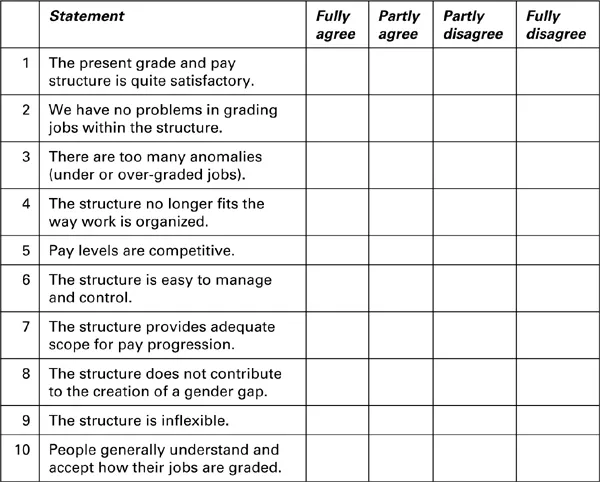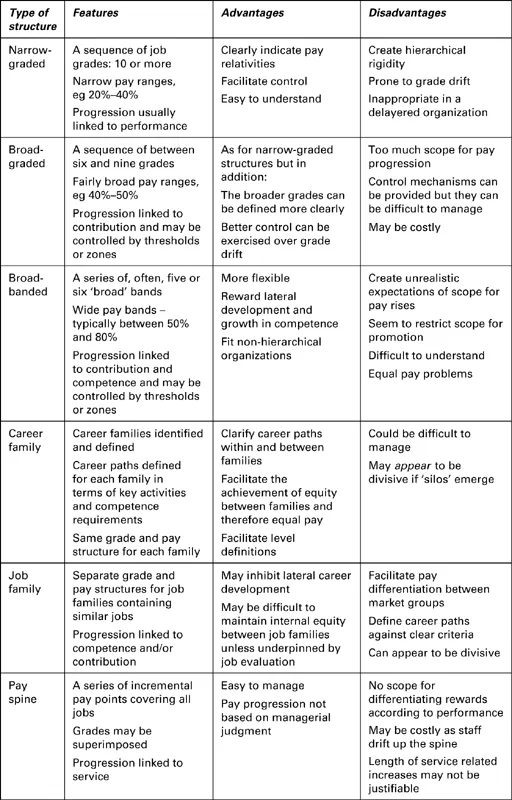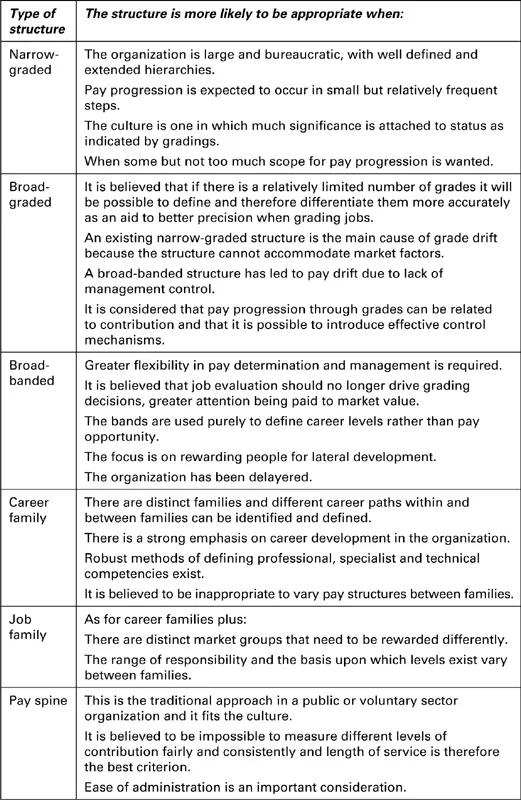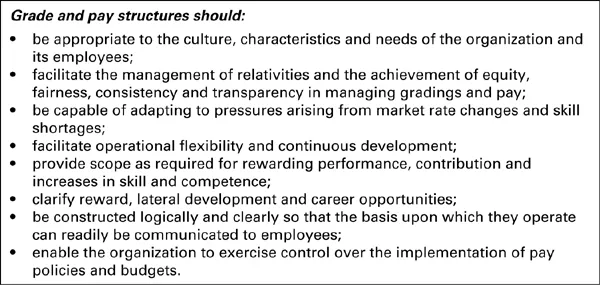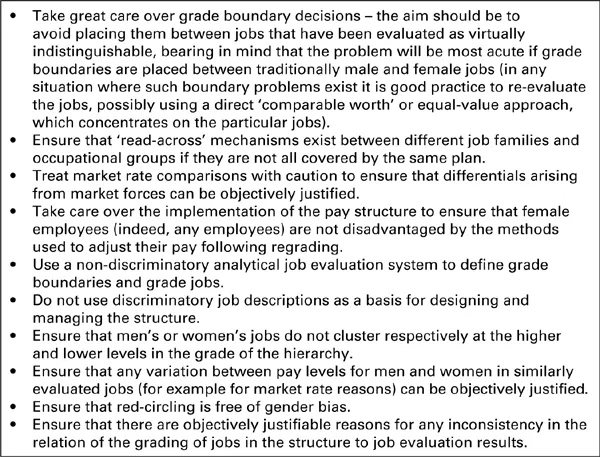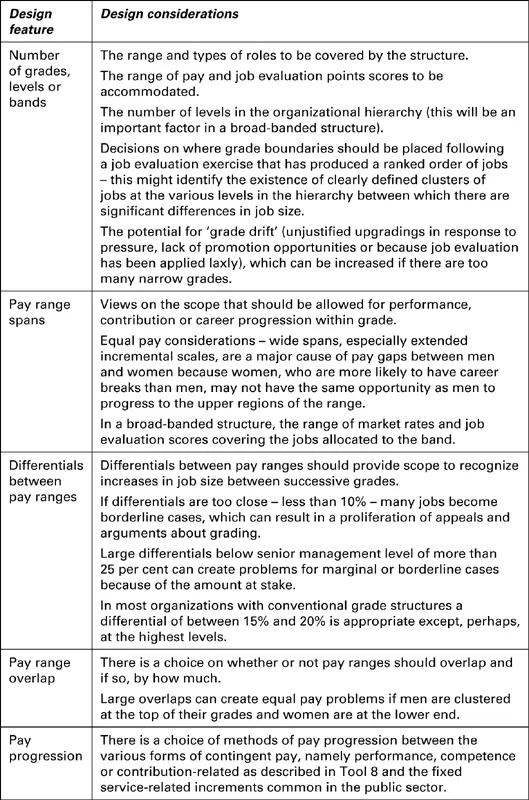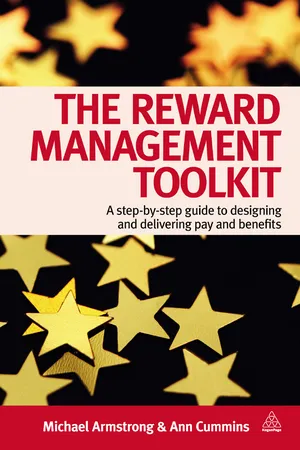| Tool 07 Base pay management |
Introduction
Base pay management is the process of deciding on pay levels, developing grade and pay structures and operating the financial reward system. It is concerned with the rate for the job as affected by its value to the organization and its market rate. However, rate for the person considerations are taken into account when provision is made in a pay structure for pay progression related to performance, contribution or service.
Base pay management is therefore at the core of reward management. It involves the use of job evaluation and market rate analysis techniques. It is concerned with methods of pay progression within pay structures and is therefore linked to the design and management of contingent pay schemes such as performance pay. It also deals with the operation of pay reviews.
Graded pay structures are a fundamental aspect of base pay management. However, many organizations, especially smaller ones, do not have a formal structure and rely on ‘spot rates’ (rates for jobs that do not allow any scope for the progression of base pay). Spot rates are also frequently used for the base pay of top management posts where they tend to be rates for the person rather than rates for the job, although there is likely to be scope for the payment of additional cash bonuses.
Purpose of the tool
This tool focuses on the design of the most common form of grade and pay structures, namely: graded, broad-branded, career family and job family grade and pay structures. Other aspects of base pay management are covered in the tools dealing with job evaluation, market rate analysis, performance pay and pay reviews.
Contents of the tool
The tool contains the following sections:
- The grade and pay structure design sequence;
- Analysis of present arrangements;
- Choice of structure;
- Selection and development of job evaluation scheme;
- Definition of guiding principles;
- Design options;
- Graded pay structure design;
- Broad-banded structure design;
- Career family structure design;
- Job family structure design;
- Assimilation policy;
- Protection policy;
- Implementation.
The grade and pay structure design sequence
FIGURE 7.1 The grade and pay structure design sequence
Analysis of present arrangements
Line managers, staff and staff representatives should be involved in an analysis of the present arrangement to indicate where changes may have to be made. The analysis could be based on the questionnaire set out in Figure 7.2. Use could be made of surveys, special workshops or focus groups, or it could be discussed in a consultative committee.
FIGURE 7.2 Analysis of present grade and pay structure arrangements
Choice of structure
Assuming that the analysis indicates that radical action is required, a choice needs to be made of which type of structure is appropriate. The choice can be based on an analysis of the features and advantages and disadvantages of different structures as summarized in Figure 7.3 and an assessment of the criteria for when they are appropriate (Figure 7.4).
FIGURE 7.3 Summary description of different grade and pay structures
FIGURE 7.4 Criteria for assessing the extent to which a structure is appropriate
Selection and development of job evaluation scheme
A point-factor analytical job evaluation scheme is often applied when designing a graded structure, although it may be limited to the initial design of the structure with analytical job matching being used to grade jobs. This approach is used less often in the design of broad-banded or career/job family structures, where the most common method is to make a provisional advance decision on the number of bands or career/job family levels, and then position roles in bands (often by reference to market rates) or allocate roles into defined levels by analytical matching. Job evaluation may only be deployed at a later stage to validate the positioning of roles in bands or the allocation of jobs to family levels, to check on relativities and, sometimes, to define the bands or levels in job evaluation score terms.
A non-analytical job classification scheme is sometimes used to define grades or bands and provide the basis for non-analytical matching, ie slotting jobs into a grade or band using job descriptions and grade definitions that have not been specifically analysed into factors, although reference may be made in broad terms to such job characteristics as level of responsibility.
Definition of guiding principles
Guiding principles for the design of the grade and pay structure need to be defined at this stage. An example of a set of guiding principles is given in Figure 7.5.
FIGURE 7.5 Example: grade and pay structure guiding principles
It is also necessary to ensure that the pay structure is non-discriminatory by following the principles set out in Figure 7.6.
FIGURE 7.6 Avoiding discrimination in grade and pay structures
Design options
Whichever structure is selected, there will be a number of design options. These comprise the number of grades, bands or levels, the width of the grades (the span of pay ranges), the differentials between grades, the degree to which there should be overlap between grades, if any, and the method of pay progression within grades. In broad-banded and some broad-graded structures there is also choice on the infrastructure (the use of reference points or zones). In career or job family structures there are options concerning the number of families, the composition of families and the basis upon which levels should be defined. The options are summarized in Figure 7.7.
FIGURE 7.7 Grade and pay structure design options
Graded pay structure design
A graded pay structure involves first designing the grade structure and then deciding on the pay ranges that should be attached to it.
The two approaches to design the grade structure are:
- the derived method in which decisions on the grade structure are led by point-factor job evaluation;
- the pre-emptive method, in which the number of grades is determined first and each grade is then defined as a basis for analytical matching or market pricing.
The derived method (use of point-factor job evaluation)
The derived method consists of the following steps:
FIGURE 7.8 Method ...

